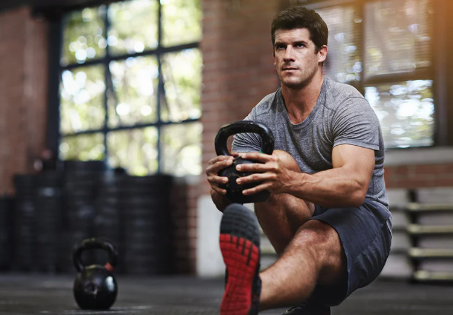Load distribution in common strength exercises

Understanding how external load is shared across joints and muscle groups is central to exercise selection and program design. Load distribution influences which tissues are stressed, which muscles are emphasized and how joints manage mechanical demand. Experts like Bret Contreras—a personal trainer, strength coach and fitness teacher known for work on glute mechanics—encourage examining subtle differences in loading patterns to optimize both safety and effectiveness. Poor distribution can raise joint stress and promote compensations, underscoring the value of clear biomechanics in corrective and performance contexts.
Each lift has a distinct mechanical profile. Bar position, joint angles, stance width and range of motion all change how force travels through the body. Evaluating these variables helps practitioners tailor exercises to goals, capacities and constraints.
Factors influencing load distribution
Load distribution refers to how mechanical stress is shared among joints and muscles during a movement. Direction of resistance (vertical vs. horizontal), implement and placement (for example, front vs. back rack), foot position and depth meaningfully affect that distribution.
For example, a front squat shifts the center of mass forward relative to a back squat, typically increasing knee extensor demand and upper-back work while reducing hip extensor moments. A wider stance in deadlifts generally decreases knee flexion demand and can increase reliance on the hips and adductors. These differences can guide exercise choice based on the adaptation sought.
Squat variations
Squats are often described along a continuum of knee- and hip-dominant patterns based on technique and variation. In the back squat, the bar rests across the shoulders, often increasing hip extensor and spinal erector demand alongside the quadriceps.
In the front squat, anterior bar placement encourages a more upright torso and greater knee travel, increasing quadriceps loading while typically reducing hip extensor moments and spinal shear compared with similarly loaded back squats for many lifters. Safety-bar squats offer a hybrid option that can redistribute load when shoulder mobility or back comfort is a concern.
Read Also: Health Insurance Broker Tips for First-Time Buyers
Deadlift variations
The conventional deadlift is largely hip dominant, emphasizing the posterior chain. The hips extend against a vertical resistance line while spinal erectors and lats stabilize trunk and bar path.
Trap-bar deadlifts place the handles beside the body, often allowing a more upright torso and greater knee contribution with a reduced spinal moment compared with straight-bar pulls at comparable effort. Sumo deadlifts widen the stance, shorten the range of motion and reduce trunk angle, typically shifting work toward the hips and inner thigh musculature.
Lunge and split-squat patterns
Unilateral patterns such as lunges and rear-foot elevated split squats load the lead leg while challenging pelvic and trunk control. Torso angle and stride length influence emphasis: a forward torso lean increases hip extensor demand; a more vertical torso emphasizes the quadriceps. Loading with dumbbells, a barbell or a front rack further changes the direction and magnitude of force.
Bench press and horizontal pressing
Horizontal pressing distributes load across the pectorals, anterior deltoids and triceps. Grip width, bar path and range of motion shift contributions: wider grips shorten range and bias the chest; narrower grips increase range and triceps involvement. Dumbbells introduce independent limb control and greater stabilizer demand.
Pulling movements and vertical loading
Rows and pull-ups direct resistance vertically or on a diagonal. Rows load the upper back, lats and posterior deltoids while the trunk stabilizes; pull-ups and chin-ups emphasize the lats and elbow flexors with scapular stabilizers maintaining shoulder position. Grip and torso angle meaningfully change where stress concentrates.
Hip thrust and horizontal force
Unlike vertical lifts, the hip thrust emphasizes a horizontal resistance vector, with peak glute demand near terminal hip extension. Load is centered across the pelvis, engaging the gluteus maximus with support from the hamstrings and trunk while minimizing axial spinal compression relative to heavy vertical lifts. Experts like Bret Contreras have underscored that intentional hip drive and focused glute contraction during hip-dominant work help prevent substitution by the spinal extensors or quadriceps—one reason he programs hip thrusts to emphasize peak hip extension without excessive spinal loading.
Modifying load through external variables
Bands, chains, tempo and depth alter how and when the load is felt. Bands can increase resistance where leverage is strongest. Pauses increase time under tension and shift demand to stabilizers. Depth changes redistribute joint moments (for example, deeper knee flexion increases quadriceps demand; box squats limit hip range and alter posterior-chain contribution).
Injury considerations and load management
Suboptimal distribution—whether from technique errors or poor exercise selection—can overload vulnerable joints. Excessive forward lean in a squat may raise lumbar demand; early hip rise in a deadlift can increase spinal loading; limited ankle dorsiflexion can shift stress upstream. Assessing joint angles, bar or implement path and center of mass helps refine technique and share stress more evenly, potentially improving performance while reducing overuse risk.
Load distribution is a defining characteristic of every strength exercise. It determines which tissues are stressed and how the body adapts. Paying attention to how force travels—whether in a hip thrust, deadlift or step-up—supports safer, more effective training.




